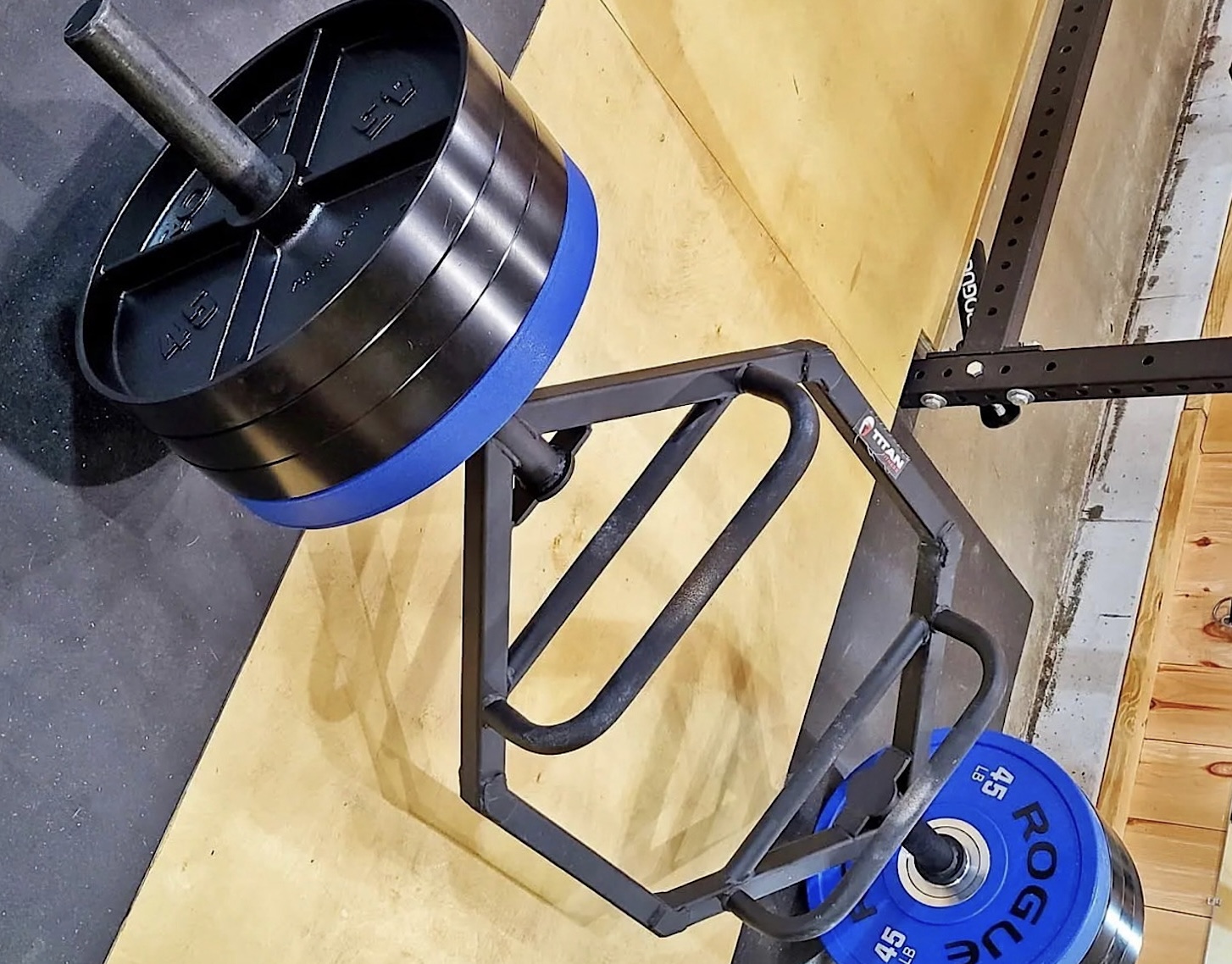8 Joint-Friendly Trap Bar Exercises for Mass
Why you should use the trap bar…
Let’s get to the exercises.
 1. Floor Press
1. Floor Press
The major benefit of the trap bar floor press is it’s easier to set up than the dumbbell variation, which is usually limited unless you have someone handing you the weights.
What’s more, the neutral grip of the handles offers a similar benefit to the Swiss bar, in that it places your shoulders into an externally rotated position. This, in combination with the reduced range of motion, makes for a great shoulder-friendly press variation.
Your grip will also be challenged to a greater extent with the trap bar given the load distribution.
2. RDL
You may have heard bloody shins are an unavoidable consequence of the Romanian deadlift (RDL). While keeping the weight close to your center of mass is important from an injury-preventative standpoint, it doesn’t mean you should use the bar as a cheese grater. Instead, ditch the CrossFit high socks and replace them with the trap bar.
With the handles at your sides, it’s way easier to get into your starting position since it encourages you to reach down as opposed to forward. This is a result of standing inside the weight (with the hex bar), as opposed to behind it (with the straight bar).
3. Overhead Pin Press
Most people don’t have any business overhead pressing with a barbell, given the demanding mobility prerequisites. This half-kneeling variation makes it easier (from a mobility perspective) to press overhead as opposed to a bilateral standing position.
Moreover, the shoulder-saving benefits of the floor press are echoed here given the neutral (palms in) grip of the trap bar.
To add icing to the cake (or salt to the wound depending on how you look at it), pressing from a full stop greatly reduces momentum. This ensures you’re pressing through a full range of motion by providing depth indication and, as a result, increases the intensity of the lift.
4. Pendlay Row
The trap bar Pendlay row is an awesome joint-friendly back-builder to add to your arsenal. It’s similar to the pin press, in that you start and finish each rep from a full stop. Here, the weight is rested either on the floor or a power rack.
The bent over row is commonly associated as a mid-back lift. But when performed in a hinged position, offers an isometric contraction in the lower back as well. This, in effect, can be a limiting factor if you have pre-existing back issues.
Rowing from a full stop (like the Pendlay row) alleviates some of the stress from the lower backsince it’s not constantly under load.
To take it a step further and minimize low back involvement even more, you can perform the same lift by elevating the weight onto spotter arms.
5. Trap Bar Push-Up
Shoulder and wrist pain are occasionally associated with push-ups. Not always, but occasionally. Similar to the floor press, the neutral grip of the trap bar reduces elbow flare(a common contributor to shoulder pain during push-ups). Plus, gripping the handles of the trap bar eliminates the need to extend your wrists and adds an element of grip work into the equation.
You can perform push-ups with the high handles for added range of motion or flip it over and use the low handles for a reduced range of motion. Both are great options depending on your goals.
If you’re like most people and have banged up shoulders from benching all the time, incorporating more push-ups into your routine may be wise. See here for 10 more pec-popping push-up variations.
6. Inverted Row with Trap Bar
Generalizations and broad stroke suggestions rarely work in the gym, but if there’s one thing most people should do more of it’s horizontal rowing exercises. And the inverted row ranks high among the best of ‘em.
Typically, you would perform inverted rows with a straight barbell. The only caveat is you’re limited to either an overhand or underhand grip.
Conversely, the trap bar allows you to row with a neutral (palms in) grip. As noted with the pressing variations, a neutral grip row tends to feel better on the shoulders. Plus, you’ll feel a great contraction in your mid traps and lats.
7. Rear Foot Elevated Split Squat
After you’ve tried trap bar split squats, you’ll wonder why it’s taken you so long to add themto your training. It’s such a natural fit and allows for higher loading potential than dumbbells. Plus, it just looks badass.
 8. Rack Pull to Shrug
8. Rack Pull to Shrug
Have the trap bar set up on a couple of spotter arms at roughly knee-height. Gripping the low handles firmly in the center with a neutral spine and braced core, “deadlift” the weight off the rack explosively and shrug as you extend your hips in one motion. Push your hips back and lower the weight back down to it’s starting position.
This is a killer posterior-chain lift as it incorporates the glutes, hammies, and low back while hammering the upper traps. Go heavy and maintain optimal form.
References

 1.
1. 
 8.
8. 






